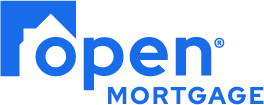
Don’t Let Private Mortgage Insurance Surprise You
Shopping for a mortgage and a home can be an overwhelming experience for many people. In each case, there are many options to consider and lots of terms that you may not have encountered before. These circumstances can make it easy to overlook details while you try to focus on the bigger picture.
During the process, homebuyers may not realize that monthly mortgage payments typically comprise more than just the cost of repaying borrowed money and its interest charge. The bottom line payment can also include a portion of your annual homeowner’s insurance premium and your property tax obligations. And for certain buyers, Private Mortgage Insurance (PMI) may be inflating your payment even more.
What is it?
Chief among a lender’s primary concerns is the ability of a borrower to repay a loan. It’s why a mortgage application requires substantial documentation of your income and financial history. It’s also why saving a large down payment was once considered the first step to buying a home. Significant up-front investment from the buyer protected the lender from borrowers who might end up owing more than the property’s value.
PMI provides a path to reducing the down payment requirements that might otherwise prevent homeownership. In exchange for lower up-front costs, buyers can pay a monthly insurance premium that protects their lender. If an owner defaults on their mortgage, the mortgage company won’t have to close the gap between a home’s value and the loan balance.
Can I avoid it?
When comparing mortgage options, pay careful attention to the payment breakdown provided. It’s where you will find the details of each item, beyond the principal and interest, that make up your monthly payment. Since PMI is an added fee with no benefit, most buyers prefer to avoid it whenever possible.
A down payment of more than 20 percent is likely to be enough to eliminate the need for PMI. Similarly, a better credit score will increase the number of loan programs you are eligible for and the likelihood of finding a strategy that won’t require PMI.
For those buyers who can’t find a way around the premiums, the key is understanding how long it is necessary. For conventional financing, PMI can often be canceled when equity exceeds 20 percent. Establishing that threshold and canceling PMI could require an appraisal or other due diligence, so track it closely. Not unlike PMI, government-backed financing, such as FHA loans, may also include a mandated insurance premium. However, these costs are likely to continue for the life of the loan. Refinancing into a conventional program may be the only route to eliminating the added cost.
Ask before you sign
Before you move forward with any underwriting process, be sure to ask about any PMI or other mortgage insurance payments. Find out how much it costs each month when the requirement ends, and what your alternatives might be. In many cases, it may still be the most affordable option for buying a home immediately. The important thing is knowing about it sooner rather than later.
Explore more tips for finding the right mortgage at https://openmtgmigrati.wpengine.com. Our site is designed to educate customers and provide the confidence to make an informed decision. When you’re ready, call to speak with an experienced originator who will make sure you’re heading in the right direction.





